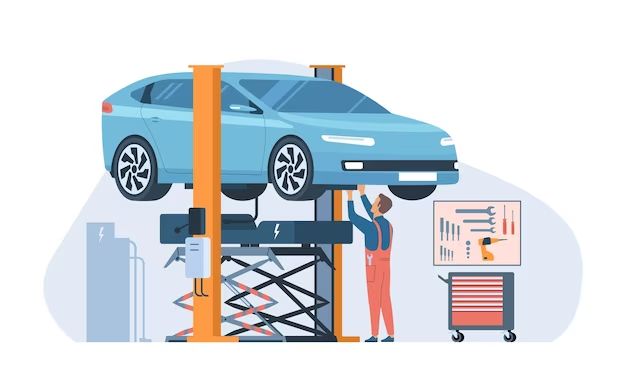Electric cars have become increasingly popular in recent years as more environmentally friendly alternatives to gas-powered vehicles. Many prospective electric vehicle owners wonder if electric cars require less maintenance than traditional internal combustion engine vehicles. While electric motors contain far fewer moving parts and fluids than gas engines, EVs do still require some regular upkeep and servicing.
Page Contents
Brakes
The brakes on electric vehicles tend to last longer than brakes on gas-powered cars. This is because regenerative braking systems on EVs allow the electric motor to slow the car down while capturing some of that kinetic energy, putting less wear and tear on the conventional frictional brakes. However, the brakes on electric cars do still require inspection and occasional replacement like any vehicle. The brake fluid should be flushed and replaced periodically as recommended by the manufacturer, typically every 2-3 years.
Tires
Electric cars have tires that wear out over time just like any other vehicle. Tire tread depth and inflation pressure should be checked regularly, and tires should be rotated and replaced as needed. The increased torque and rapid acceleration of electric motors can cause tires to wear out faster if not properly maintained. Most manufacturers recommend rotating tires every 5,000-8,000 miles in electric vehicles.
Suspension and Steering
The suspension and steering components on electric vehicles require routine inspection and maintenance just like on gas-powered cars. Ball joints, control arm bushings, tie rods, wheel bearings, shocks and struts wear out over time. Any loose, worn or damaged steering and suspension parts should be replaced to ensure safe handling and ride quality. An alignment should be performed if new tires are installed or suspension parts are replaced.
HVAC Air Filter
Electric cars have a cabin air filter that filters dust and other particles from the air entering the interior HVAC (heating, ventilation and air conditioning) system. This filter should be replaced periodically, typically every 10,000-15,000 miles, to protect the HVAC components and maintain air quality in the cabin.
Cooling System
While electric vehicles do not have radiators and cooling systems for engine oil and transmission fluid, they do have a dedicated cooling system for the battery pack and electric motor. The coolant/refrigerant in this loop should be flushed and replaced according to the intervals specified by the manufacturer, typically every 3-5 years. Keeping the batteries at optimal temperature helps extend their useful lifespan.
Battery Pack
The battery pack in an electric car does require some minimal maintenance to help maximize its usable range and lifespan. Batteries degrade slowly over hundreds or thousands of charge cycles, leading to reduced range over the life of the vehicle. Proper care, like avoiding complete discharges and exposing the battery to extreme high or low temperatures, can extend its longevity. Thermal management and conditioning of the battery helps optimize performance and usable capacity.
Motor
Electric motors require very little routine maintenance. There are no spark plugs, fuel injectors, valves, belts or related components that require periodic inspection or replacement like in a gas engine. The motor bearings are sealed and lifetime-lubricated. As long as the cooling system is maintained to keep the motor at proper operating temperature, the electric motor should provide hundreds of thousands of miles of reliable service.
Electronics
Electric vehicles contain extensive electronics systems for battery management, power delivery, connectivity, driver aids and comfort features. Software and firmware updates will be required periodically to fix bugs, enhance features and improve safety just like with computers, smartphones and other electronic devices. Keeping electronics up to date helps ensure the system operates reliably.
Cabin Air Filter Replacement Intervals for Popular EVs:
| Make/Model | Replacement Interval |
| Tesla Model 3 | Every 20,000-30,000 miles |
| Chevrolet Bolt | Every 22,500 miles |
| Nissan Leaf | Every 15,000-20,000 miles |
| Ford Mustang Mach E | Every 20,000 miles |
| Polestar 2 | Every 15,000 miles |
Tire Rotation Intervals for Popular EVs:
| Make/Model | Replacement Interval |
| Tesla Model S | Every 6,250 miles |
| Hyundai Kona Electric | Every 7,500 miles |
| Volkswagen ID.4 | Every 5,000-7,500 miles |
| Audi e-tron | Every 5,000 miles |
| Porsche Taycan | Every 5,000 miles |
Brake Fluid Flush Intervals for Popular EVs:
| Make/Model | Replacement Interval |
| Kia Niro EV | Every 3 years |
| Jaguar I-Pace | Every 2 years |
| Tesla Model X | Every 2 years |
| BMW i3 | Every 2 years |
| Nissan Ariya | Every 3 years |
Conclusion
While electric vehicles do require less maintenance than gas-powered cars overall, they still need some regular upkeep and servicing to keep them running safely and reliably. Components like tires, brakes, suspension, steering, and HVAC filters wear out through normal use over time. Batteries and electronics also require proper care and maintenance. Following the manufacturer’s recommended maintenance schedule is important to maximize the lifespan and value of any electric vehicle.
